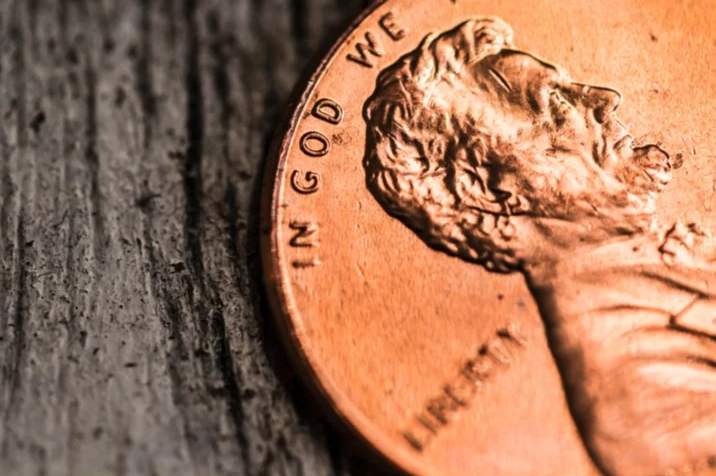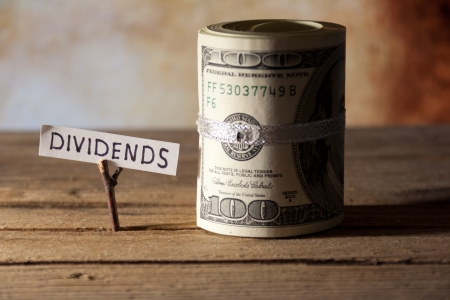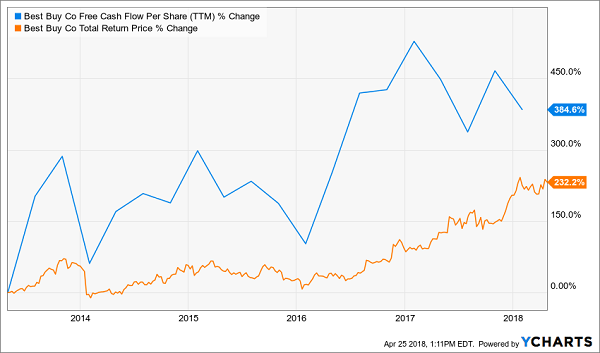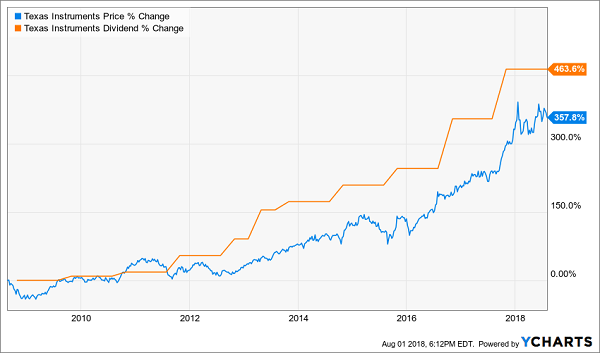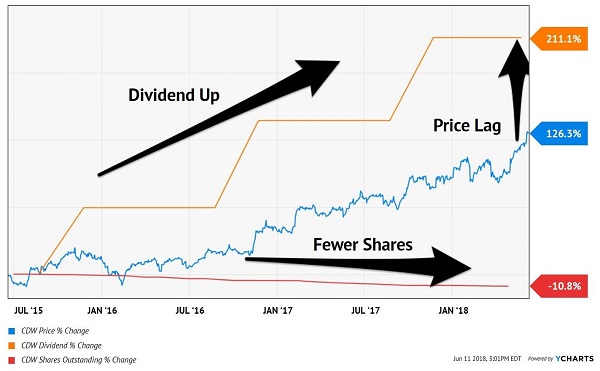High yield stocks come out of a range of different business sectors. You may be aware of business development companies (BDCs), real estate investment trusts (REITs), and master limited partnerships—MLPs. Also, on high yield investor radars will be closed-end funds (CEFs) and leveraged ETFs. For an attractive yield combined with a high level of safety, the best high yield stocks come from a subsector of a subsector of one of these three letter descriptors.
REITs operate under a pass-through tax rule that allows a company to not pay income taxes if its business involves the ownership or financing of real estate and at least 90% of net income is paid to investors as dividends. The REIT sector can be divided into equity REITs and finance REITs. Equity REITs are companies that own commercial real estate. These companies usually specialize in a specific type of property such as healthcare, hotels, office buildings, warehouses, and apartments.
Finance REITs operate on the lending side of real estate. A finance REIT may be a lender or just a company that owns a portfolio of mortgage backed securities (MBS). A lot of finance REITs will be a combination of originating new mortgages, packaging mortgages for sale and fee income, holding loans in a portfolio, and owning MBS.
Finance REITs separate into two categories. These companies typically focus on either the residential side of mortgage lending or on commercial property financing. The residential mortgage side takes a lot of interest rate risk to be able to turn 4% home loans into a 10% stock dividend yield. I am not a fan of this business model. The commercial mortgage REITs, on the other hand, give investors an attractive combination of high current yield and a financially conservative business model.
Commercial finance REITs have these attractive attributes:
- Commercial mortgages are written at low loan to value amounts. These companies typically have portfolios with an overall 65% LTV.
- Commercial mortgages are almost always adjustable rate. This means that if interest rates increase, so will the REIT’s interest income.
- Commercial property lending requires a high level of expertise and flexibility. This allows the REITs to generate higher yields on the loans they make.
- A commercial finance REIT can generate attractive yields on equity using a very moderate amount of leverage.
Here are three commercial finance REITs that will put some serious yield into your income portfolio.
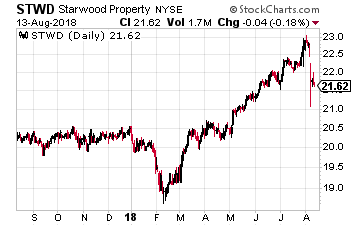 Starwood Property Trust, Inc. (NYSE: STWD) is one of the largest commercial lenders of any business type – including banks. The company currently has a $12.6 billion loan portfolio with a 62% loan to value. Since launching in 2009 the company has put out almost $40 billion in loans and investments with zero realized losses.
Starwood Property Trust, Inc. (NYSE: STWD) is one of the largest commercial lenders of any business type – including banks. The company currently has a $12.6 billion loan portfolio with a 62% loan to value. Since launching in 2009 the company has put out almost $40 billion in loans and investments with zero realized losses.
In recent years, Starwood has acquired the largest commercial mortgage special servicer. This acquisition has produced growth in CMBS origination and investments. The company also owns a $2.7 billion equity commercial property portfolio that generates 9% to 12% cash on cash returns. Management constantly looks for investment opportunities both in and out of the commercial mortgage business.
STWD current yields 8.4%.
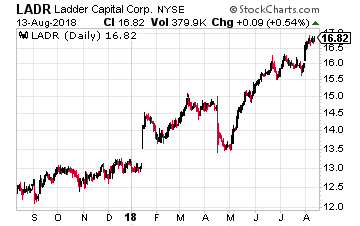 Ladder Capital Corp (NYSE: LADR) uses a three-prong approach to its investment portfolio. The three legs are commercial mortgage loans, which account for 75% of the company’s capital allocation; commercial real estate equity investments for 12%; and commercial MBS bonds accounting for 8%. The business plan is that the three groups shift as more or less attractive through the commercial real estate cycle. Leverage is a comfortable 2.7 times equity. Since it paid its first dividend for Q1 2015, Ladder has steadily increased the quarterly payout at an average 8% annual growth rate.
Ladder Capital Corp (NYSE: LADR) uses a three-prong approach to its investment portfolio. The three legs are commercial mortgage loans, which account for 75% of the company’s capital allocation; commercial real estate equity investments for 12%; and commercial MBS bonds accounting for 8%. The business plan is that the three groups shift as more or less attractive through the commercial real estate cycle. Leverage is a comfortable 2.7 times equity. Since it paid its first dividend for Q1 2015, Ladder has steadily increased the quarterly payout at an average 8% annual growth rate.
The shares currently yield 7.7%.
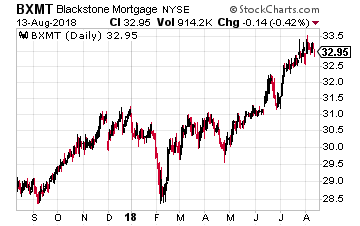 Blackstone Mortgage Trust, Inc. (NYSE: BXMT) is a pure commercial mortgage lender. The REIT receives high quality mortgage lending leads from its sponsor, The Blackstone Group L.P. (NYSE: BX).
Blackstone Mortgage Trust, Inc. (NYSE: BXMT) is a pure commercial mortgage lender. The REIT receives high quality mortgage lending leads from its sponsor, The Blackstone Group L.P. (NYSE: BX).
As of its 2018 first quarter earnings, BXMT had a $12.1 billion portfolio of senior mortgage loans. 94% of the portfolio is floating rate. The loans were at 62% loan to the value of the underlying properties. In the first quarter the company originated $1.9 billion of new loans, while $900 million of principal was paid off. Leverage is 2.3 times debt to equity.
Blackstone management states that each 1% increase in LIBOR will grow annual net income by $0.24 per share. The stock currently yields 7.5%.
In recent months, I have added two newer, still in the growth phase, commercial mortgage REITs to my Dividend Hunter recommendations list. If you like the idea of high yield and growing dividends, check out a subscription for these two winners and more of my picks.
Pay Your Bills for LIFE with These Dividend Stocks
Get your hands on my most comprehensive, step-by-step dividend plan yet. In just a few minutes, you will have a 36-month road map that could generate $4,804 (or more!) per month for life. It's the perfect supplement to Social Security and works even if the stock market tanks. Over 6,500 retirement investors have already followed the recommendations I've laid out.
Click here for complete details to start your plan today.
Source: Investors Alley
